An Electric Vehicle and its battery are the dynamic duo of the new automotive world. They’re like the Batman and Robin of the streets, here to revolutionize transportation in a way that’s cooler than a penguin with sunglasses. So let’s buckle up for a joyride into the zany world of electric vehicles and their not-so-secret sauce: batteries! Forget the run-of-the-mill, we’re talking about the superheroes that power EVs and make them go 0 to 60 in 3 seconds.
Meet the MVP of the EV world – the battery system. It’s like Arnold Schwarzenegger of the electric vehicle world, calling the shots on range, speed, and how long the party lasts. But hold on, not all batteries are cut from the same cloth! It’s like comparing avocados to pineapples, or in this case, lithium-ion to solid-state batteries.
In this whirlwind adventure, we’re breaking down the nitty-gritty of battery tech. Get ready for the deep dive into electrochemical properties (fancy words for what makes them tick), energy densities (aka how much juice they pack), charge/discharge efficiencies (how fast they can chug that energy), thermal management requirements (yeah, they can get a little hot under the collar), and lifecycle assessments (basically, how long they can keep the EV shindig alive).
Now, let’s talk durability. Imagine buying a pair of shoes with an eight-year service agreement – that’s the kind of warranty we’re dealing with in the EV universe. It’s like the manufacturers saying, “Our batteries are the Chuck Norris of longevity, and we’ve got your back for eight years, no matter what!” This is a big deal because, let’s face it, EV batteries are like the VIP section of the price tag.
They go through some serious boot camp to ensure these batteries don’t fizzle out like a flat soda. We’re talking tough love for batteries – they need to prove they can keep up the pace and not turn into high-tech paperweights over time. These tests ensure that your EV’s heart stays strong, maintaining its capacity and efficiency, and avoiding any road-trip meltdowns.
In a nutshell, picking the right battery technology is like assembling the perfect squad for your superhero adventures. So, here’s to the unsung heroes – the batteries that keep the EV world buzzing, one electric mile at a time!
We’re about to dive into the thrilling world of batteries and among them the lithium-ion batteries, or as the cool tech boys call them, Li-ion, are like the Titans of the battery world. They’ve got the stamina to last between 3 to 5 years or around 500-1000 charge cycles – basically the battery equivalent of hitting the gym regularly. In the electric vehicle scene, they’re like The Legends who can still maintain 70-80% of their capacity after 8-10 years, meeting the industry’s golden 8-year longevity standard. Talk about staying power!
At this moment, in 2024, Li-ion batteries are the epitome of battery types, akin to the champions in the world of energy storage, widely produced for everything from smartphones to sleek electric vehicles. They thrive on economies of scale, but let’s not forget that their mood swings are influenced by the global supply of raw materials like lithium, cobalt, and nickel. Prices can be as unpredictable as a Tinder date – they’ve decreased over the years, but market demand and material availability keep them on their toes.
Trust in Li-ion batteries is like the trust you have in your bestie – solid. They’ve earned their stripes thanks to their high energy density, efficiency, and safety record that’s been shaping up nicely. But, just like your bestie who occasionally overdramatizes their breakup stories, Li-ion batteries have had their share of drama too. Overheating issues and recalls in early models led to safety standards being tightened and continuous improvements being made. Safety first, folks!
Now, let’s talk Gravimetric Energy Density and energy-to-weight Ratio – try saying that three times faster after a shot of espresso. In simpler terms, it’s the energy-to-weight ratio, and Li-ion batteries are flexing hard with a density ranging from 150 to 250 Wh/kg. Translation: they can store more energy for their weight compared to the battery dinosaurs of the past. 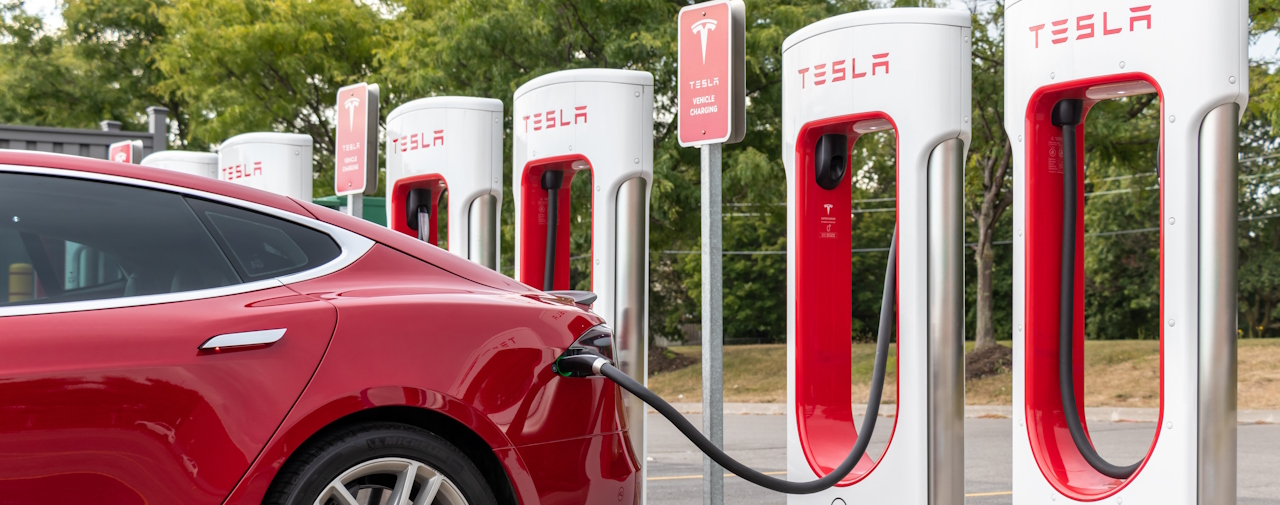
The latest buzz in the EV battery world: nano-composite silicon anodes for Lithium-Ion batteries! Move over, avocado toast; there’s a new toast in town, and it’s charged up with some serious energy. packing a punch with a range of 250 to 680 Wh/L. That’s watt-hours per liter, in case you were wondering.
Now, I know what you’re thinking: “Nano-composite silicon anodes? Is that some kind of sci-fi code for extra-long-lasting battery life?” Ding, ding, ding! You nailed it. It’s like the Superhuman version of batteries, swooping in to save the day and rescue our precious EV gadgets from the dreaded low-battery anxiety.
Picture this: You’re cruising down the road in your electric vehicle, feeling all eco-friendly and smug. Suddenly, you realize you forgot to charge your car, and range anxiety kicks in. But fear not, because nano-composite silicon anodes are here to turn that anxiety into a distant memory. Your EV now has the range of a cheetah on energy drinks – smooth, fast, and ready to conquer the world or at least to the next charging station. These bad boys are like the cool rebels of battery tech, shaking things up and giving us more bang for our buck. Bringing some serious energy to the stage.
So, here’s the lowdown: these nano-composite silicon anodes crank up the energy density of Li-ion batteries. Translation? More power in the same space. It’s like trying to fit your entire wardrobe into a carry-on – except now you’ve got a 007 travel bag, and it’s holding way more than you thought possible.
And who benefits the most from this battery upgrade? Electric vehicles (EVs), baby! With this tech, EVs could potentially hit the road for an extra 100 miles or more on a single charge. Say goodbye to range anxiety – that fear of being stranded in the middle of nowhere with a dead battery. Now, your EV can go the extra mile, literally.
So, next time you hear someone talking about nano-composite silicon anodes, remember – it’s not just tech jargon, it’s the secret sauce making your EV go the extra distance. Who said batteries couldn’t be the life of the party?
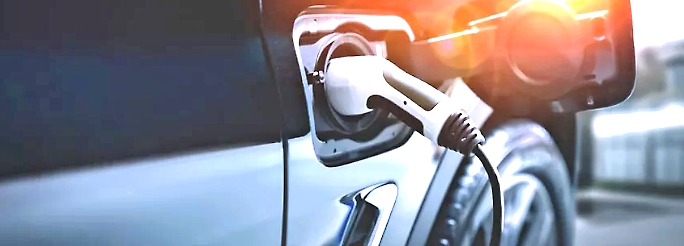
Make and Models Using Li-ion Batteries are:
Tesla (Model S, Model 3, Model X, Model Y) is Known for high-performance Li-ion batteries with proprietary technology.
Model Y (Juniper 2025) will be the first EV to use nano-composite silicon anodes-based Li-ion Batteries.
Nissan Leaf: One of the earliest mass-market EVs, utilizing Li-ion batteries.
Chevrolet Bolt EV: Uses Li-ion batteries to offer a competitive range.
BMW i3 and i8: Incorporates Li-ion batteries for both its all-electric and hybrid models.
Audi e-Tron: Audi’s foray into EVs, powered by Li-ion batteries.
Li-ion battery-powered electric vehicles are packed with high energy density, both in the weight and size departments. It’s like they hit the gym and came out shredded but without the bulky muscles. Picture this: your phone lasting longer than your latest Netflix binge, and your electric car going the distance without needing a pit stop. That’s the magic of Li-ion batteries, my friends. They’re like the marathon runners of the power game, making sure your devices keep going and going. And let’s not forget their other cool traits. These batteries have a longer lifecycle – they’re practically the Energizer Bunny of the electronics world. Plus, their self-discharge rates are lower than my motivation to write about technology after a long day. It’s like they know we’re too lazy to constantly charge or replace them.
No wonder Li-ion batteries hold popularity among stars in the modern electronic and automotive scenes. They’re the real MVPs, powering our lives one gadget and electric ride at a time. So here’s to you, Li-ion batteries – thanks for keeping us charged and entertained without weighing us down like a backpack full of textbooks from our college days. You’re the real heroes we never knew we needed!
Now we are diving into the world of Lithium Nickel Manganese Cobalt (NMC) batteries – the unsung heroes of electric rides. So, what’s the deal with these batteries? Well, they’re like the marathon runners of the battery world, outlasting the competition with their impressive lifespan. We’re talking several years, people! It’s like the Gandalf of batteries – “You shall not pass away anytime soon!” Now, don’t be fooled by their longevity; these babies are not just for show. NMC batteries are strutting their stuff in everything from your trusty smartphone to those fancy electric cars. They’re like the Olympic marathon runners of the battery party.
But hold up, why aren’t we all riding electric unicorns if these batteries are so amazing? Well, my friends, it all boils down to the moolah. NMC batteries can still cost a pretty penny, and you can blame it on our dear friend cobalt – expensive and in demand. Despite the hefty price tag, the cost of NMC batteries has been doing the limbo, getting lower and lower thanks to some tech wizardry and economies of scale. It’s like battery Black Friday, but all year round. Now, let’s talk about trust. These batteries have earned their street cred, especially in the auto world. The automotive industry is smitten with NMC batteries because they’re the Goldilocks of the battery world – not too energy-dense, not too unsafe, just right. It’s like finding the perfect balance between high performance and heat generation and not burning your house down.
The key advantages of NMC batteries are strutted onto the scene with energy densities ranging from 150 to 220 Wh/kg, making them the MVPs for situations where both energy capacity and weight are critical considerations. So there you have it, the lowdown on NMC batteries – the Dwayne ‘The Rock’ Johnson of reliability, the trendsetters of battery tech, and the Cape Crusaders of the battery world. Who knew batteries could be so sassy? Keep on charging, my friends!
The Gravimetric Energy Density of NMC batteries. Picture the Scene: NMC batteries flex their muscles in the 150 to 220 Wattshours range per kilogram (Wh/kg). That’s like having a mini powerhouse on the road, ready to slay the energy game. Storing a crazy amount of energy relative to its weight. Imagine your phone lasting through a Netflix binge without needing a recharge every five hours – that’s the magic of high gravimetric energy density.
Now, let’s talk about Volumetric Energy Density. NMC batteries are basically the George Clooney of the battery world, keeping things neat and tidy in the range of 500 to 800 Wh/L. This means they’re all about maximizing energy storage in a limited space, like a battery version of Tetris. It’s like fitting a whole weekend’s worth of outfits into a tiny suitcase – efficient and surprisingly space-savvy. These batteries are like the wonder workers of the tech world, battling the evil forces of low-energy storage and clunky designs. Making sure your car doesn’t feel like it’s dragging its feet because of a hefty battery. So, next time you’re zipping around town in your electric car, just remember – you’re riding on the shoulders of NMC batteries, the unsung heroes of energy density. 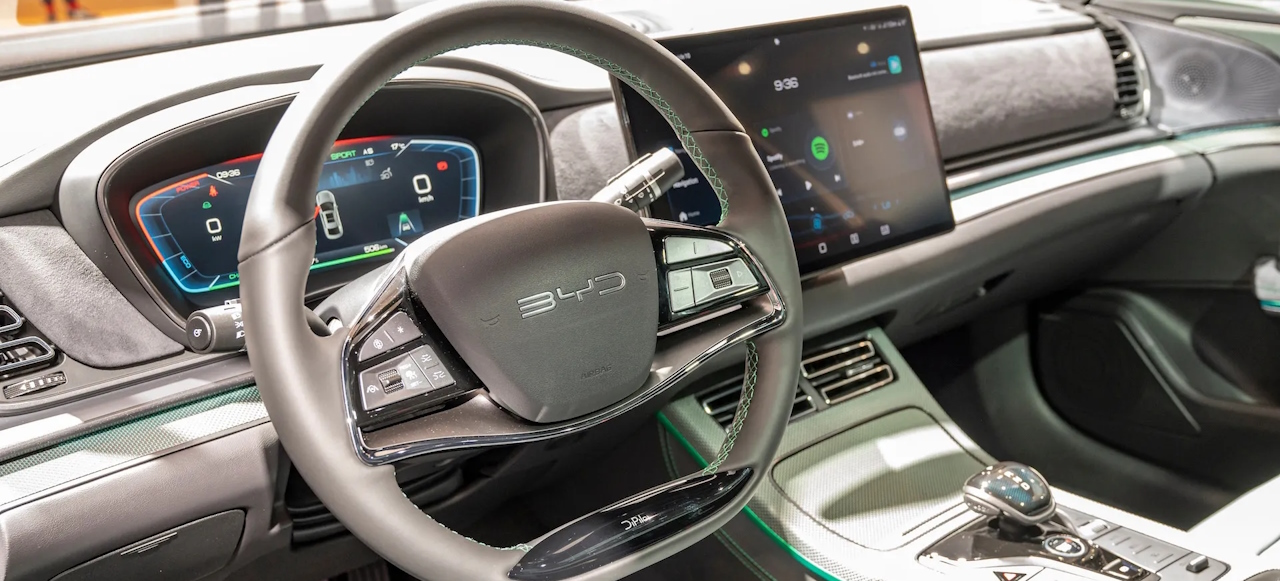 Makes and Models Using NMC Batteries:
Makes and Models Using NMC Batteries:
Chevrolet Bolt EV: Uses an NMC battery, known for its range and efficiency.
Nissan Leaf (newer models): Some newer models of the Leaf have shifted to NMC batteries.
BMW i3: The BMW i3 utilizes NMC batteries in its newer models to provide better range and performance.
Volkswagen ID. series: VW’s ID series of electric vehicles are also equipped with NMC batteries to balance range, cost, and performance.
Mercedes-Benz EQ series: The EQ series from Mercedes-Benz uses NMC batteries to power its luxury electric vehicles.
These bad boys are like the Swiss army knives of the EV industry, blending energy density, cost-effectiveness, and safety into a power-packed combo. And can we talk about how manufacturers and consumers are giving these batteries a standing ovation? It’s like the entire EV community is throwing confetti at NMC batteries, shouting, “You go, lithium-ion! We believe in you!”
But let’s get real – as battery tech keeps playing catch-up with the demands of our fancy electric rides, NMC batteries are leading the pack. They’re the trendsetters, the trailblazers of the EV world. Other batteries are just trying to keep up, like the less popular members of Destiny’s Child. Sorry, not sorry.
So, next time you see an EV cruising down the street like it’s in a music video, give a little nod to the unsung hero beneath the hood – the NMC battery. It’s the real star of the show, powering our rides and making sure we stay cooler than a cucumber in an electric car.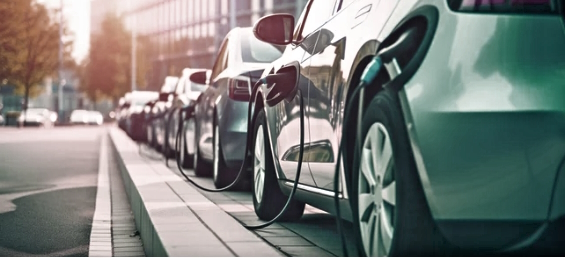 Lithium Nickel Cobalt Aluminum Oxide (NCA) Batteries, aka the NCA batteries. Now, I know what you’re thinking, “What’s the deal with these batteries, and why should I care?” Well, my friends, gather around to check this electrifying tech talk for NCA batteries.
Lithium Nickel Cobalt Aluminum Oxide (NCA) Batteries, aka the NCA batteries. Now, I know what you’re thinking, “What’s the deal with these batteries, and why should I care?” Well, my friends, gather around to check this electrifying tech talk for NCA batteries.
So, NCA batteries are high-end and fabulous, and everyone wants a piece of them. They can take a beating, sustaining hundreds of charge cycles, just like my enthusiasm for online shopping. But hey, they do have their Henchmen moments. Watch out for temperature tantrums, charging habits judgment, and the drama of depth of discharge. These batteries are the A-listers of the tech world, strutting their stuff mainly in electric vehicles and our beloved portable gadgets. Now, I’m not saying they’re high-maintenance, but the cost of NCA batteries is a bit like the price tag on those fancy shoes you’ve been eyeing – it’s up there. Blame it on cobalt and nickel, the celebs of the periodic table, making these batteries the VIPs of lithium-ion types. But don’t worry, folks, the tech nerds are on a mission to make NCA batteries more budget-friendly. They’re playing around with materials and manufacturing techniques, trying to pull off a battery for the mass market without breaking the bank. Fashion-forward batteries, who knew?
Now, let’s talk about trust – not the kind issues of your ex’s hoodie returning borrowed, but the kind NCA batteries have earned in the market. Especially in the EV sector, these batteries are like the offroad 4X4 you didn’t know you needed. High energy density? Check. Reliability? Double check. They’re basically the Super Man of batteries, ready to save the day. And let’s not forget their party trick – high energy density. It’s like they’re the overachievers of the battery world, offering energy densities that are off the charts. For EVs, this means longer joyrides and less baggage in the form of heavy batteries. It’s like going on a road trip with that friend who insists on packing everything but the kitchen sink – not fun.
So there you have it, folks. NCA batteries – the paragons of the lithium-ion world, are here to power up your gadgets and keep you moving like a boss. Now, go forth and conquer the battery universe with this newfound knowledge!
Makes and Models Using NCA Batteries: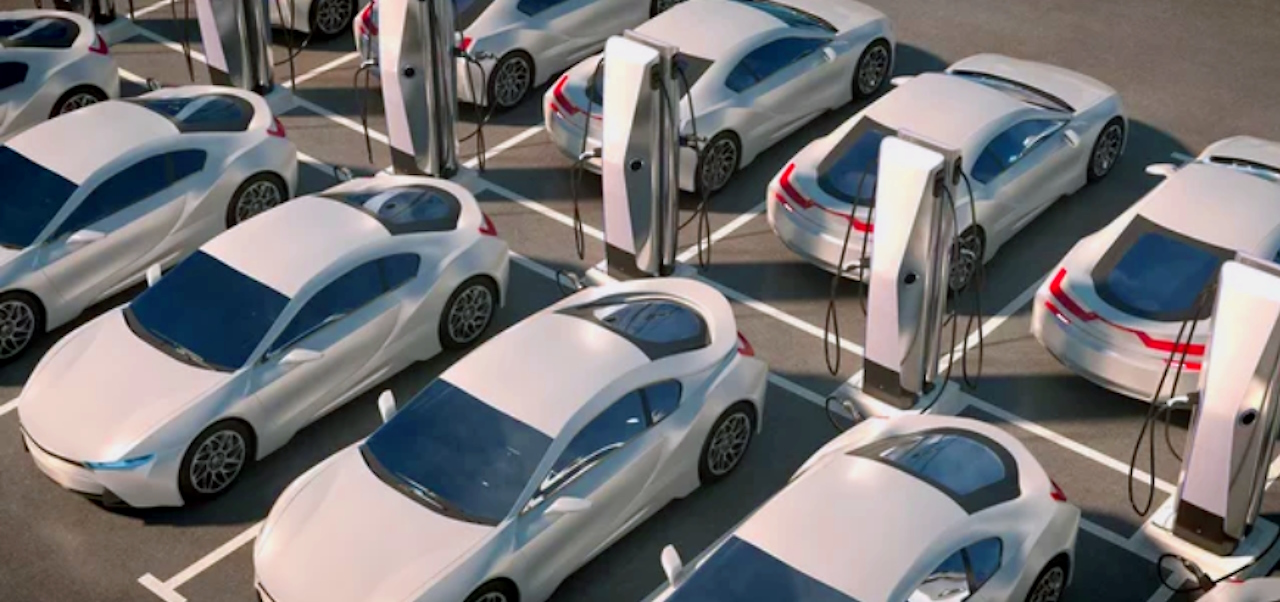 Model S, Model X, and Model 3 and their sleek rides are all about that long-range life and top-notch performance, and a big part of the magic is thanks to the crazy high energy density packed into those NCA batteries. Sure, they might cost a bit more, but, they bring so much energy to the table that it’s like they’re hosting a party in your car 24/7. And let’s be real, who wouldn’t want a battery that’s basically the high power and long range of the EV club? Premium models are all about that NCA life in the electric car runway.
Model S, Model X, and Model 3 and their sleek rides are all about that long-range life and top-notch performance, and a big part of the magic is thanks to the crazy high energy density packed into those NCA batteries. Sure, they might cost a bit more, but, they bring so much energy to the table that it’s like they’re hosting a party in your car 24/7. And let’s be real, who wouldn’t want a battery that’s basically the high power and long range of the EV club? Premium models are all about that NCA life in the electric car runway.
Lithium Iron Phosphate (LFP) Batteries are the longevity Avatars in the battery world, and guess what? They don’t just have stamina; they’ve got personality too. They’re known for going the distance – we’re talking thousands of charge cycles. It’s like they’ve been training for a marathon run, but instead of sweating, they’re just sitting there, holding onto their capacity like it’s the long-lasting Bruce Lee fight. These batteries aren’t just popular because they’re ready to fight on any block; they’re taking over the town, especially in the electric vehicle and energy storage scenes. Why? Well, they’ve got a secret weapon – they’re cost-effective. No cobalt means no expensive drama, and let’s face it, cobalt sounds like the name of a villain in the Transformers movie.
They’re like the bargain hunters of the battery aisle, using iron and phosphate instead of splurging on fancy and ethically dubious materials. It’s like they’re saying, “I don’t need cobalt to be fabulous.” And guess what? LFP batteries have built a solid reputation, like the reliable best friend who always has your back. They’re practically like Harrison Ford of the EV and renewable energy world. Why? Because they’re cool under pressure, thanks to their thermal and chemical stability. No thermal runaway drama here; these batteries keep their cool, literally.
Sure, they might not have the energy density of their fancier cousins – the NMC or NCA batteries – but who needs maximum range when you can have a battery that’s safe, reliable, and won’t break the bank? It’s like choosing a reliable hatchback over a flashy sports car – practical, sensible, and still gets the job done. So, next time you’re thinking about batteries, remember the LFP crew. They’re not just powerhouses; they’re the hidden heroes making sure your EV stays on the road without burning a hole in your wallet. Cheers to Lithium Iron Phosphate.
Makes and Models Using LFP Batteries:
Tesla Model 3 and Model Y (Standard Range versions): In some markets, Tesla has started using LFP batteries for its standard range models, prioritizing cost and lifecycle over energy density.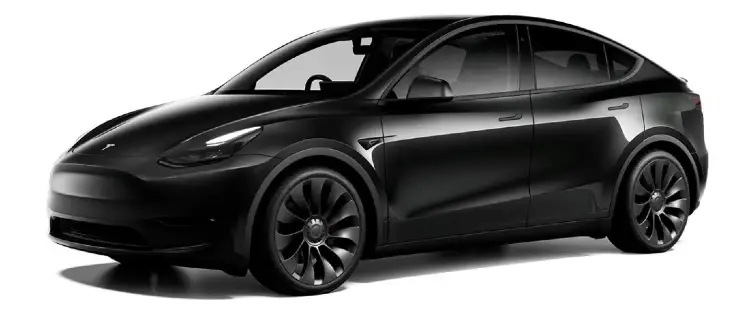
BYD Models: BYD, a major Chinese EV and battery manufacturer, uses LFP batteries extensively across its range of electric vehicles.
Other Chinese EV manufacturers prefer LFP batteries for their domestic models due to their safety profile and lower cost. Brands like Xpeng, NIO, and Li Auto have models that use LFP batteries in some of their models.
LFP batteries are making waves in the stationary energy storage scene as well. These batteries aren’t just for fancy electric cars; they’re keeping our energy stored and safe like the behind-the-scenes heroes of the energy storage world. They’re not here for the flashy, high-energy density drama. Nope, they’re all about safety, reliability, longevity, and being cost-effective, and won’t break the bank. It’s like finding that Uncelebrated Champions of a product that ticks all the boxes without costing an arm and a leg. The fact that LFP batteries are taking over applications where safety and long-term reliability are non-negotiable is a big deal. It’s like they’re saying, “Move over, high-energy density; we’re here for the long haul, and we’re not going to catch fire while doing it.”
The battery world is evolving, and LFP batteries are at the forefront, finding their cozy niche based on specific needs. It’s like they’ve got their own Celestials in the battery club, and everyone’s invited – as long as you prioritize safety and longevity over flashy lights and sky-high energy density. Cheers to LFP batteries – the guardians of reliable energy storage, proving that sometimes it’s not about the size; it’s about the safety, longevity, and a bit of practicality thrown in for good measure.
We’re now diving into the electrifying world of Nickel Cobalt Manganese (NCM) Batteries – you know, like the Robert Downey Jr. in “Iron Man” movies of batteries, but with a little less metal suit and a bit more cobalt controversy.
So, picture this: you’re cruising down the road in your fancy electric car, feeling all eco-friendly and high-tech. What’s keeping that electric magic alive under the hood? You guessed it – NCM batteries! Now, these babies are like the overachievers of the lithium-ion family, known for their impressive lifespan. It’s like the battery version of Benjamin Button – getting younger as the years go by.
But hold your horses, because the secret sauce to NCM batteries lies in their composition. We’ve got the NCM 111, NCM 622, and the cool kid on the block, NCM 811. It’s like the battery fashion show, and everyone’s trying to outshine each other. And don’t get me started on cobalt – the dignitary guest that’s both expensive and a bit of a drama queen. The industry’s all like, “Can we please find a cheaper date?”
Now, these batteries are the warranty stars in EVs, living up to those 8-year warranties like Champs. They’ve got the energy density game on lock, making sure your electric ride goes the distance. It’s like they’re saying, “Who needs a repair shop? We’re here for the long haul!” But, oh boy, cobalt drama! The environmental impact and ethical concerns have turned the spotlight on these batteries. It’s like the battery manufacturers are attending therapy sessions to sort out their issues with cobalt. And guess what? The industry is doing the breakup dance, moving towards less cobalt-heavy compositions – enter NCM 811, the breakup anthem of batteries.
So, next time you’re zipping around in your electric wonder, give a nod to those NCM batteries, the Marvel heroes powering your eco-friendly adventure. They might have a few cobalt-induced wrinkles, but hey, who doesn’t love a good plot twist in the battery saga? Keep on rolling, you green tech enthusiast!
Makes and Models Using NCM Batteries: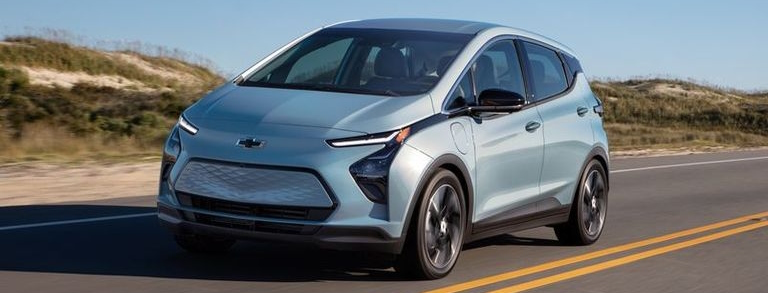 Chevrolet Bolt EV: Uses NCM batteries to provide a competitive range and performance.Nissan Leaf: Newer models of the Leaf incorporate NCM batteries.
Chevrolet Bolt EV: Uses NCM batteries to provide a competitive range and performance.Nissan Leaf: Newer models of the Leaf incorporate NCM batteries.
BMW i3: BMW’s compact electric car uses NCM batteries in its newer models.
Hyundai Kona Electric and Ioniq Electric: These models use NCM batteries to balance range, efficiency, and cost.
Renault Zoe: A popular EV in Europe, known for using NCM batteries.
NCM batteries are in the EV battery scene for balancing energy density, cost, and performance like it’s a walk in the park. It’s like finding that perfect combo of cute, smart, and funny – elusive but totally worth it. Manufacturers are jumping on the bandwagon and slapping them into their EV models left and right, and consumers are giving them the nod of approval. Trust me, it’s like choosing the perfect bank for your mortgage – you gotta have confidence in your choice, and NCM batteries are winning that popularity contest. In a world where EVs are taking over the streets faster than you can say “zero emissions,” NCM batteries are quietly powering our rides to sustainability glory. It’s like having a secret weapon that’s not-so-secret anymore because, well, everyone’s in on it. And as the EV market grows like the number of filters on our Instagram posts, NCM batteries are holding it down like a boss. They’re the key players in the game of achieving the perfect balance between range, affordability, and sustainability. It’s like the holy trinity of electric car dreams – going the distance, not burning a hole in your wallet, and saving the planet one battery charge at a time.
So, here’s to NCM batteries – the avatar heroes of the EV revolution, the backbone of our electric adventures making sustainability look effortlessly trendy. Keep rocking those electrons, NCM batteries.
Tighten your seatbelt because we’re talk about the hottest thing in the EV world – solid-state batteries! Imagine if your car’s battery was as solid as your commitment to hitting the snooze button every morning. That’s the future we’re looking at, and it’s not just about higher energy density – it’s like upgrading from regular coffee to triple-shot espresso for your electric ride.
So, these solid-state batteries are like the kryptonite of the electric vehicle universe. Forget the drama of liquid electrolytes – we’re going solid, baby! It’s like upgrading from a chaotic kitchen to a perfectly organized spice rack. No spills, no leaks, just smooth, reliable energy. And can we talk about charging speed? We’ve all been there, impatiently waiting for our cars to juice up. Well, guess what? Solid-state batteries are here to rescue us from those endless charging pit stops. QuantumScape (company) is throwing water at regular lithium-ion batteries, claiming their solid-state wonder can hit 80% capacity in less than 30 minutes. That’s like going from waiting-for-paint-to-dry levels of boredom to grabbing-your-coffee-and-you’re-out-the-door kind of speed.
Oh, and safety? Solid-state batteries are basically the firemen of the EV world. They don’t freak out with thermal runaways, unlike some of our more dramatic lithium-ion pals. It’s like having a fire extinguisher on standby but for your car battery. No leaks, no combustion – just a chill, drama-free energy source for your electric chariot.
So, once again fasten your seatbelt, fellow EV buyers. The solid-state revolution is coming, and it’s bringing more energy, less drama, and faster charging times. It’s like upgrading your electric ride to a quick phone charge level. Cheers to a future where our cars are as solid as our hydroelectricity to power our homes– no outages, for our road trip adventures.

Volkswagen has been throwing cash around like confetti at a party and decided to invest big bucks in QuantumScape (Company), and now they’re like best friends in the electric vehicle game. It’s like when you find that perfect partner in crime, but for cars. They are teaming up to create solid-state batteries that are not only ready for the big stage but can also handle the drama of the automotive industry. Because let’s be real, the car world can be a bit of a Fashionista sometimes. These batteries are like the kryptonite of the EV energy world. They’re here to save the day with large-scale production and meet all the fancy requirements the car nerds have. You know, the ones who wear pocket protectors and dream about torque ratios.
So, Volkswagen is basically saying, “Move over, traditional batteries! We’re bringing some serious innovation to the party.” It’s like upgrading from a flip phone to the latest iPhone – but for cars.
In a nutshell, Volkswagen and QuantumScape are cooking up some high-tech battery magic, and it’s going to revolutionize the way we zoom around town. Get ready for the electric car revolution, my friends – it’s going to be shockingly awesome!
With solid-state batteries, things are about to get as wild as an EV doing 0 to 60 in 2.5 seconds and taking our EVs to the next level, but let’s be real – they’ve got some hurdles to clear. QuantumScape and VW are still in the lab, tackling issues like long-term durability and making sure the manufacturing process is as scalable as our weekend plans (which aren’t very scalable, by the way).
As of the last gossip – I mean, updates – Volkswagen and QuantumScape are on a mission to slap those solid-state batteries into production within a few years. Yes, you heard it right – we’re talking about having these high-tech power packs in Volkswagen EVs faster than you can say, “Are we there yet?” The EV battery landscape is like apps on your mobile phone, with various electrochemical storage solutions trying to swipe right on sustainability, safety, and cost-effectiveness. Picture it: batteries making profiles with unique performance metrics and material compositions. Talk about a diverse bunch! It’s like building the perfect squad for the ultimate road trip.
Let’s talk about the trajectory of development. Well, it’s like a movie montage of scientists high-fiving each other as they create batteries that are more sustainable, high-performing, and ready to tackle the demands of the growing EV sector. It’s not just about getting from point A to point B; it’s about doing it with style, efficiency, and maybe a little electric spark.
In the grand scheme of things, these batteries are helping us zoom into the future of electrified transportation. Who knew the road to tomorrow was paved with batteries? Buckle your EV safety belt, my friends, because the ride just got a whole lot juicier!



